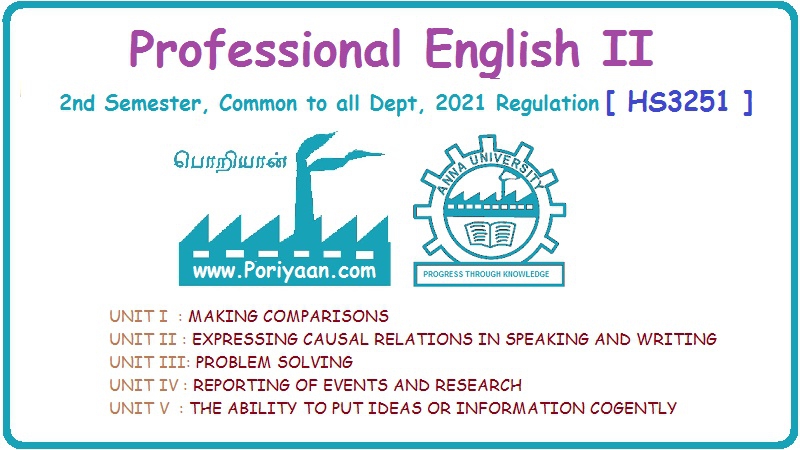Professional English: Speaking: UNIT 3
Group Discussion Based on Case Studies
Speaking | Professional English
The process of a case-study group discussion is almost similar to that of a discussion on a topic. The preparation time given is about about 5 minutes.
UNIT-III
4. GROUP DISCUSSION BASED ON CASE STUDIES
Techniques
and Strategies
How
to approach a case study based Group Discussion
Monday,
January 11th, 2021

The
process of a case-study group discussion is almost similar to that of a
discussion on a topic. The preparation time given is about about 5 minutes. The
panel starts the discussion and observes the discussion without moderating it,
and the group is at complete liberty to understand, analyse, and interpret the
case appropriately in order to make a recommendation.
There are however 2 key differences.
Firstly,
the participants are given a case statement instead of a topic. The candidates
must prepare on a given problem for a few minutes and come out of their
perspective and a remedial measure.
Secondly,
there is a difference between group discussion and case study discussion in
which the panelist does not expect any outcome/solution/any opinion in GD
whereas the panelists have already preconceived outcome or solution in their
minds and they expect the candidate to arrive at or arrive atleast near the
idea.
When
GD is considered a descriptive question, case study discussion is considered an
objective question.
The
cases invariably feature a business problem or a social problem. The problem
given may be from personal or professional field. While solving the problem,
part of the evaluation involves testing the participants' ability to understand
the problem in all its complexities.
Case
studies are usually of two types: One is coming out with solution.
Another
is assessing the solution and to evaluate whether the decision is correct or
not. The former is the norm and the latter is an exception.
The
former is considered easier by some and the latter is considered easier by
some. But most of the case study discussion belongs to the former type.
The
Six Steps of Approaching a Case-study based Group Discussion
The
participant should not impulsively express his opinion but analyse different
opinions and he should express what he considers the best. Thinking over case
study problems involves the following steps:
Step
1: Situational analysis
Step
2: Evaluation of alternatives
Step
3: Recommendation
Example of a case study:
A
software engineer is hired as a trainee by a company that specializes in
hardware. At the end of the training period, he is found to be below average in
picking up facts and he is given a letter by his immediate superior. The letter
includes some humanitarian aspects and it suggests some openings for him in
some other concerns. The engineer uses the letter to take the company to court
and challenges the dismissal of his immediate superior. How should the company
resolve this situation?"
Step 1: Situation Analysis
Please
remember that in a case study you - both the individuals and the group - must
solve the problem from the perspective of the entity in the question at the end
of the case statement - in the above case you are 'the company'. Nobody is
allowed to role-play in such discussions. However, you should certainly examine
how the given situation affects all the concerned parties.
Begin
analysing the situation by asking the questions about what we do not know about
the situation, For example, is this recommendation letter personal (made on the
basis of a personal relationship) or professional? Has it been issued on the
company letterhead? The facts definitely point in that direction.
Therefore,
the assumption we need to make is that this is a professional recommendation,
and hence potentially damaging to the company.
Who
are the parties directly involved in this problem? The employee, the superior,
the company management
Who
are the parties indirectly involved in this problem? The rest of the company
staff, the shareholders of the company, and the general public.
The
potential court case and its proceedings will eventually affect the first two,
and the third's perception of the company may also be affected by a potentially
lengthy and publicised court case.
Step 2: Problem definition
This
is the most important stage of the discussion. If the situation has been
analysed properly, we can not only see all the inherent problems but also
determine the order of priority in which they must dealt with.
Problem
1:
What to do with the court case? The court is the superior authority which we
cannot control.
Problem
2: What
do to with the superior? His error in judgment has brought the company into trouble.
Problem
3:
How to ensure that such an incident is not repeated in the future?
Step 3: Statement of objectives
We
discuss a range of solutions. We might compromise and we cannot compromise.
This must also be determined in the order of priority.
Objective
1:
Are we going to retain the candidate?
Objective
2:
We must minimise the damage caused to the company's reputation.
Objective
3:
We must take appropriate steps to ensure that such an incident is never repeated.
Step 4: Evaluation of Alternatives
Discussing
a course of action is not really possible without a proper discussion.
Identified problems can only be solved.
Step 5: Recommendation
Upon
discussing alternatives, the group may make a unanimous recommendation, or the
opinion may be divided. In case of such division, a majority recommendation is
made to the panel.
The
group is under no obligation to come to a consensus. T
Step 6: Plan B
The
panel expects you to identify all possible scenarios in which the case may end.
In order to successfully solve the case, all 6 steps must be rigorously
followed. It is a completely logical process. Take one step out of it, and the
discussion will collapse like a computer program without one crucial digit or a
Sudoku puzzle.
Summation:
Do
not deviate from the 6-step process.
If
the rest of participants deviate, it is wiser for an individual to keep trying
to bring them back to the process than to deviate with them. The panel will
notice that you tried to approach the task methodically, and did not abandon
logic in the midst of chaos. That is a BIG positive.
The
case can be solved only if the entire group works together. Work in the spirit
of the team, but do not forget that the team spirit does not mean that people
should follow the majority.
To
understand any problem, we should view it from others' perspectives as well
apart from our perspective. In order to be able to do this - both now and in
future - cultivate empathy. Develop a habit of putting yourself in the shoes of
others and feel what they feel.
Nobody
said it more eloquently than Aristotle: "To perceive is to suffer."
Example
Watch
the following you tube video on
Case
Study Live Discussion | PSU | SAIL SSB | IIM | Campus Placements | Bank Dr
Vijayender

https://www.youtube.com/watch?v=EcIY8iVp42A
Exercise
Speak
on taking up a course and getting placement with a case study.
Professional English: Speaking: UNIT 3 : Tag: : Speaking | Professional English - Group Discussion Based on Case Studies
Related Topics
Related Subjects
Professional English II
HS3251 2nd Semester 2021 Regulation | 2nd Semester Common to all Dept 2021 Regulation
